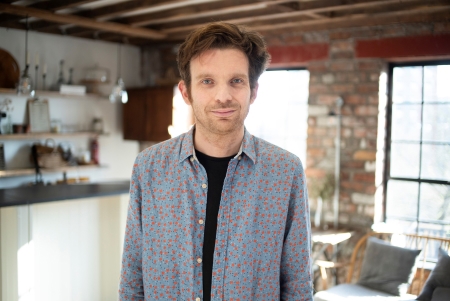The philosophy of regenerative design imagines a different future for the way we design, build and use buildings. Core to this shift will be the move from our current unstable, extractive and monocultural material supply chain to one that is much more resilient, renewable and heterogenous. Enabling this shift will be engineers who have transitioned from roles as specifiers from a tiny palette of materials to creative re-users of a diverse and evolving spectrum of local material resources.
Concrete, steel, masonry and timber dominate our global construction material supply chain. They are the construction equivalent to wheat, corn, rice and soy, the four crops that dominate global food supply. The creation of these worldwide monocultures allows high production levels and profits for those that control the supply chain. But the cost of uniformity is lack of resilience, which, as we start to see the largescale disruption of global trade, we are starting to feel. What’s more, the production of these monocrops and ‘monomaterials’ is breaking our ecosystem boundaries. So what can we do about it?
In 2020 I was the winner of the Sir Misha Black Award for Design Education, which is administered by the 1851 Royal Commission. I used the prize funds to set up the Regenerative Design Lab, which aims to explore how regenerative design principles can be used to create a built environment sector that is a force for good, building back our local ecosystems. Core to that story is how we think about and work with construction materials.
Nature is constantly renewing its designs to create an ever more complex and thriving web of life while maintaining its ecological balance. At a systems level, the aim of regenerative design is to create designs that integrate human and natural systems so that we can do the same. It looks to nature to say, how can we design systems that both meet our material needs while making sure we live within the limits of our biosphere?
Building on the writing of systems thinker Donella Meadows, we can define four functional requirements that need to be met to create a regenerative material supply system that improves the health of human-natural systems.
The first requirement is to use renewable sources of energy and input materials. There is no waste in natural systems – all outputs from one system are the inputs to another. Contrast this with our existing materials supply chain which relies largely on fossil fuels to create large volumes of single-use materials. The first step to imagining a regenerative material supply chain is to shift our focus to reusing the materials we already have in circulation, and where mineral extraction remains necessary, to do so on a local scale and in such a way that enables a richer natural ecosystem to emerge in parallel with that work.
A regenerative materials supply chain goes together with a renaissance in the role of the engineer
The second is to build resilience by creating layers upon layers of feedback loops that link production and utilisation of materials to the capacity of the ecosystem to create them. So rather than bringing materials to a site from far away, engineers would aim to work with the unique properties of the materials on their local bio-region. When one local material is no-longer available, design must shift to using another. And when an existing structure becomes redundant, its materials become the raw material for the next.
Requirement three is for systems to self-learn and evolve. In a regenerative material supply chain this capacity could manifest itself as a continual process of experimentation with the most effective use of available materials. Together with the layered feedback this process enables the emergence of an increasingly complex and adaptable fit of materials supply to the ecosystem and its needs.
The final requirement is to enable our supply chain to shift from a super-centralised supply structure involving super nodes and vulnerable bottle necks, to a much more distributed network of nested sub-systems. This nested structure is a natural consequence of the evolution of requirement three. In our materials supply chain, this requirement might manifest itself as local material exchanges that operate at a neighbourhood-level, that together, support and enable city-wide material coordination and production, that in turn, enable exchange of materials at regional level.
A regenerative materials supply chain goes together with a renaissance in the role of the engineer, from material specifier to material surveyor, innovator and steward, responsible for the long-term growth of our renewable stocks of building materials. They will walk around their neighbourhood and not see a static bunch of buildings, but rather a series of materials in flow, moving through the ecosystem, and with each stage, enriching the living environment for humans and nature alike.

Oliver Broadbent is director of Constructivist Ltd
Regenerative Design for Structural Engineers, by James Norman and Oliver Broadbent, will be published in 2023 by the Institution of Structural Engineers





Hard hat mounted air curtain adds layer of protection
Something similar was used by miners decades ago!